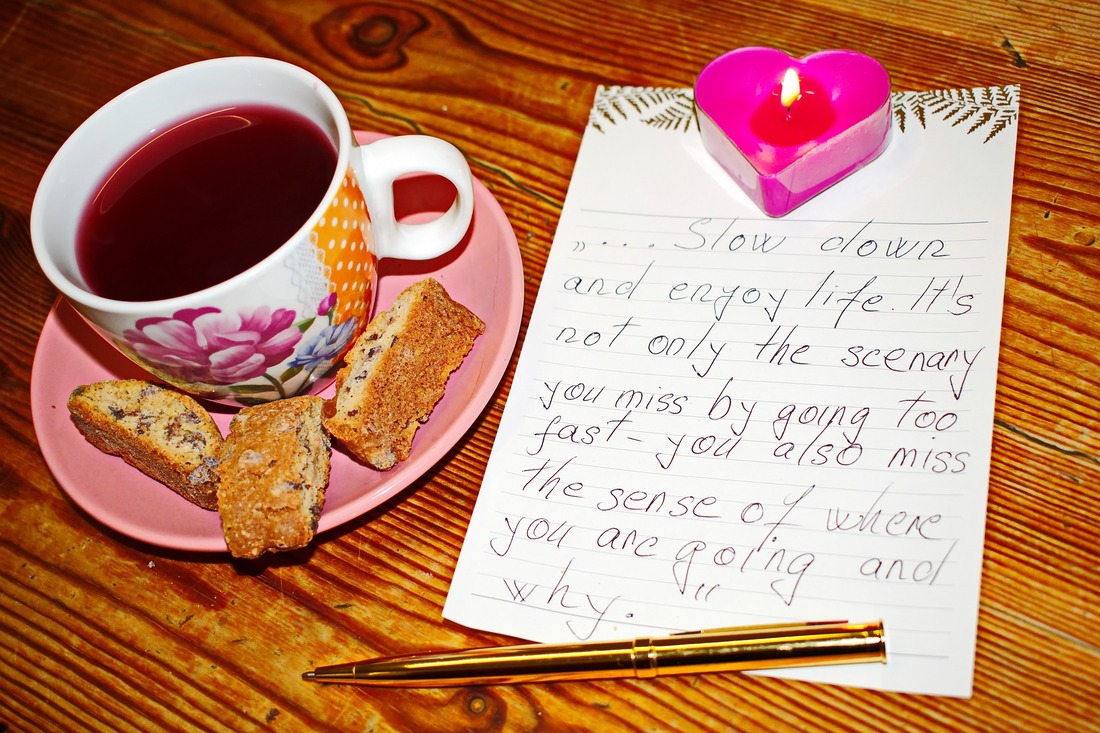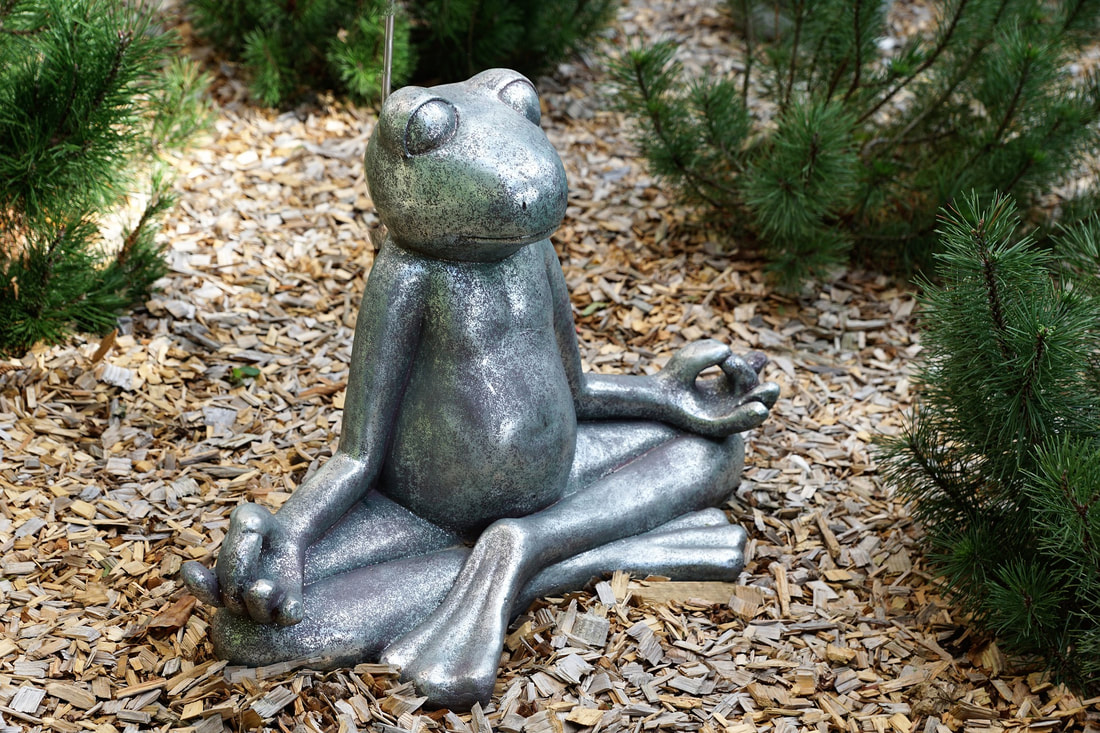|
7/31/2020 3 Comments Mindful eating...What was the last thing that you ate? Did you rush through eating it or did you savour it?
In meditation, the focus is bringing your awareness to the here and now. We can bring this focus to our eating too! Most people have probably experienced eating something and then hours later not even been able to recall what they ate. It comes down to our busy lives and technology at hand when we are eating. We are either working, watching television, reading our devices…and as a result, we are mindlessly eating. A lack of awareness when eating can lead to some health issues, such as obesity, high blood pressure and more. So, what exactly is mindful eating and how do we do it? Mindful eating is simply eating and focusing on the present moment and savouring each mouthful. But it actually goes even deeper than that! Have you thought of the process that this food has gone through to be in the form that it is as you eat it? The process can start by thinking about:
To help you in the actual mindful eating process, I have highlighted 10 points to get you started:
Bon appétit!! #meditation #mindfuleating #eatingforhealth #howtomeditate #breathing #visualisation #guidedmeditation #therapy #stillness #peaceful #calm #corporatemeditation #thoughtful #kind #selfcare #soothing #calming #innerpeace #joy #emotions #espressingoneself #healthybody #health
3 Comments
7/31/2020 0 Comments JournallingHave you ever tried journalling? Writing is a wonderful meditative practice – either on its own, in addition or combined with other forms of meditation. At times, when you feel that finding that inner quiet is challenging, writing your thoughts can be very helpful to express feelings and to quiet your mind. You may find that in some instances, it is the only way in which you can let go. There is something to be said about a few minutes of open and un-censored expression on paper! If you are wanting to experiment with this form of meditation, a good way to get the flow is to simply write the first thing that comes to mind. Try not to judge what you write and keep an open mind. If you incorporate a little slow breathing, the experience can open up to many words just flowing from your pen. Keeping a meditation journal is comforting, as you will always have a place to go to, to spend time journalling your thoughts. Remember to ignore any negative thoughts about whether your writing is good enough or interesting. To help you get started, I’ve listed a few writing prompts. I urge you to give this a try 😊 10 Writing prompts to help you with journalling:
A few tips…
#meditation #howtomeditate #journalling #mantra #breathing #visualisation #guidedmeditation #soundmeditation #therapy #stillness #peaceful #calm #corporatemeditation #thoughtful #kind #selfcare #words #writingprompts #writingformeditation #soothing #calming #innerpeace #joy #emotions #espressingoneself 7/31/2020 0 Comments How should I meditate?Once you have committed to making meditation a part of your life (congratulations!) you may just need to fine tune a few things before you start. For instance, the question of ‘How should I meditate?’ or ‘How long should I meditate for?’ may be some of the questions.
Let us take a look at these to start with. The ‘How should I meditate’ question is a personal choice and it might be a case of trying out before you decide. For instance, if you are a visual or creative person, you might find that looking at a picture such as beautiful scenery or a peaceful image may be what you need to start off. Closing your eyes and picturing a calm lake with a sun setting may evoke a sense of calmness, and as you close your eyes, you picture this image. As you proceed with your breathing, you may like to visualise actually being in this serene place and with each breath, allow yourself to immerse a little further. Feel the air, the sun, the coolness, the sounds that surround you. However, perhaps closing your eyes is a challenge, and so you prefer to gaze at a candle flame. The peaceful colours and stillness of the flame may bring you into a sense of inner calmness, just like the flame. With regards to the question, ‘How long should I meditate for’ some people prefer to set a time limit. This way, they are committed to using up all the time just for meditation. It may just be what you need to commit to a daily practice, when your own daily schedule is full. If a timer is not your preference, then the answer to this question is simple – there is no right or wrong time to how long you should meditate for. To be beneficial however, the following can assist with incorporating a technique to suit you, in your own timeframe. Your technique can be loosely based on these elements. The key elements of meditation: Being present – be aware of how your body is now. Grounding – feel yourself connected to earth, connected to your breath. Technique – visualising, sound, mantra, gazing etc End Grounding – bringing yourself back into the space, being present and alert. There are many ways to meditate and you may just surprise yourself with what suits you. Give a different method a try, you will soon know which is right for you. Here are a few: Mantra – this is when you repeat a positive word or affirmation throughout your meditation or in intervals. Breathing – this can be purely breathing slowly in and out until you begin to feel calm. Or bringing your awareness to your breath at intervals. Journalling – this a fantastic way to let your thoughts run wild as you write them on a piece of paper. This can be particularly good to release recurrent thoughts or to just feel freedom to express yourself. Just committing to meditation is a wonderful and positive step – so embrace every minute and let it unfold in whichever technique or time frame is right for you. I have tried to keep this article brief for the purpose of ‘just getting to the point of it’ – so look out for future in-depth blogs and posts as I delve into these and other aspects of meditation! #meditation #howtomeditate #mantra #breathing #visualisation #guidedmeditation #soundmeditation #therapy #stillness #peaceful #calm #corporatemeditation #thoughtful #kind #selfcare 7/24/2020 0 Comments Monkey Mind?It happens to most people – we start our meditation practice and just as we have come through the breathing process, started to relax each area of the body and go into that super feeling of total letting go… the grocery list comes to mind, or that we forgot to pay the electricity bill, or that little Timmy needs to be picked up early from school to take him to his orthodontic appointment.
The list goes on…and on and on. Does this sound familiar? Don’t feel bad to answer yes, because most people experience this. In fact, not only in our space of meditation can this creep in, but in our everyday lives when we are going about our daily business. It is said that Buddha described the human mind as being filled with drunken monkeys, jumping around, screeching, chattering, carrying on endlessly. He said that everyone has these monkeys who are clamouring for attention, but the key to tame the monkeys is with the same mind that is pushing us to do just the opposite of what we want it to do. He taught his students that over time, the monkeys will be tamed. The concept of a ‘monkey mind’ has been in existence for centuries. So, the question is - how do we stop it? The answer is – to know that those monkeys can and will be trained - so we need to train ourselves FIRST to deal with the thoughts in a way that will benefit us, and then the ‘monkeys’ will then be trained. By altering how we react it gives us power to win the battle of the monkey mind! Here are THREE ideas to try out…
Whatever is your preference, stick to it. Your mind will eventually get the idea it can’t rule you all the time. Then in time, it will become second nature to you, to step into your preferred method. Taming your monkey mind will do all of the following for you:
The ideas detailed above will not only help you in your meditation practice, but in your every day life when one thought leads to another. By finding your preference in how you react, you can empower yourself to be ready at any time! What is your preferred method for an active monkey mind? #monkeymind #meditation #stillness #bepresent #iam #breath #breathing #inspiration #meditative #corporatemeditation #bestill #selfcare #positivity #positivethoughts #healthybodyandmind #healthyhabits #empoweryourmind #meditationplus1111 |
GillianA little inspiration from me to you...I hope you enjoy. Archives
April 2023
Categories© 2022 Meditation Plus @meditationplus1111 |
Proudly powered by Weebly




 RSS Feed
RSS Feed